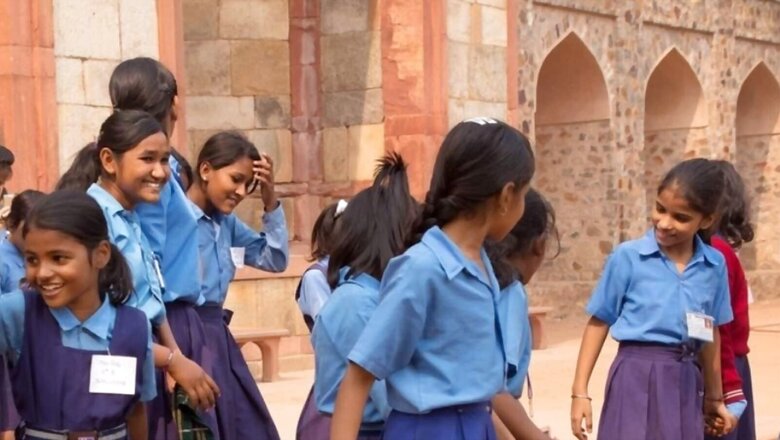
views
School enrolment figures increased to a record high of over 98 per cent despite prolonged closure during the pandemic, according to the Annual Status of Education Report (ASER) 2022 launched on Wednesday.
The report pointed out that the big turnaround during this period was the rebound of enrolment in government schools.
The crucial report pointed out that the proportion of not currently enrolled 6-14-year-old children is down almost half of what was observed in 2018 and the lowest in the decade since the Right to Education Act came into effect.
”The enrolment rate for the 6 to 14 age group has been above 95 pc for the past 15 years. Despite school closures during the pandemic, overall enrollment figures have increased from 97.2 pc in 2018 to 98.4 pc in 2022. The proportion of children in this age group who are not currently enrolled has dropped to 1.6 pc,” the report said.
Across rural India, the proportion of 3-year-olds enrolled in some form of early childhood education stands at 78.3 per cent in 2022, an increase of 7.1 percentage points over 2018 levels.
”There is a substantial shift in enrolment patterns of young children in the age group 3-5 years who have moved into the ICDS (anganwadi) system from other forms of pre-school and school provision. In 2022, 66.8 pc of 3-year-olds were enrolled in Anganwadi Centres as compared to 57.1 pc in 2018. Among 4-year-olds, Anganwadi enrolment has increased from 50.5 pc (2018) to 61.2 pc (2022),” it said.
”Fears had been expressed that economic stress might lead to children dropping out of school but this has not happened. Instead, the already low proportion of not-enrolled children in the 6-14 age group has halved from 2.8 to 1.6 per cent over four years. Now, going to school is every child’s habit,” it said.
According to ASER 2022, the proportion of not currently enrolled 6-14 year-old children is almost half of what was observed in 2018 and the lowest we have seen in the decade since the Right to Education Act came into effect.
”Even more heartening is that we see a secular decline in the proportion of children not currently enrolled in the 15-16 age group – the age group considered most at risk for dropping out. In 2010, the proportion of 15-16 year-olds who were out of school was 16.1 pc.
”Driven by the government’s push to universalise secondary education, this number has been steadily declining and stood at 13.1 pc in 2018. The decline continued in 2020 to 9.9 pc and this proportion stands at 7.5 pc in 2022,” it said.
”Private school enrollment had been rising for almost a decade. In 2018, 30.9 pc children were enrolled in private schools. This has come down to 25.1 pc in 2022. This 5.8 percentage point decrease amounts to a sudden 19 percent drop in private school enrollment, and an 11 percent increase in rural government school enrollment,” it said.
The report noted that the state school systems have absorbed these 8 million or more children without a fuss. If it was not for the widespread infrastructure of the state school systems, millions of children leaving private schools would have been left without schools.
”The government school enrolment in this age group which saw a steady decline from 2006 to 2014 to record 64.9 pc and remained around that till 2018. In 2018 it increased to 65.6 pc and thereafter reached 72.9 pc in 2022. This is visible in all States/ UTs in the country,” it said.
ASER is a nationwide, citizen-led household survey that provides a snapshot of children’s schooling and learning in rural India. The first ASER was conducted in 2005 and repeated annually for 10 years. ASER 2022 is the first field-based ”basic” nationwide ASER after a gap of four years. It comes at a time when children are back in school after an extended period of school closure in view of the pandemic.
The latest study surveyed a total of 19,060 villages in rural India, which include 3,74,544 households and 6,99,597 children in the age group 3 to 16.
Read all the Latest Education News here




















Comments
0 comment